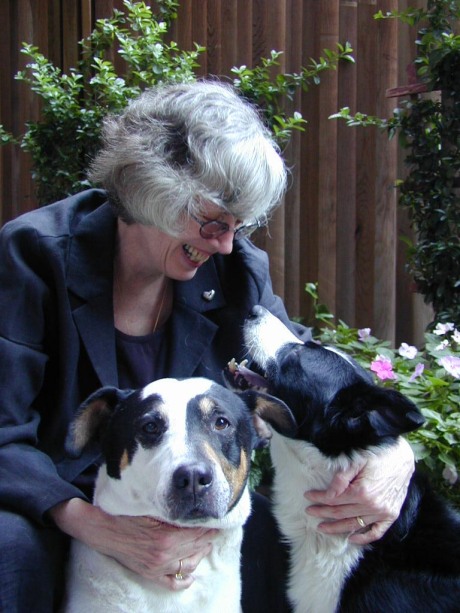Watson was the first dog Flash met on our first trip with him to Paris over a decade ago. They each had a ball to retrieve, but as it almost always is with dogs, one object mysteriously trumps another, even when they seem to be identical, and as it turned out on this sunny day, the only ball either dog wanted to fetch was Watson’s. And so two strangers worked out a deal that specified the rules and restrictions of their game of fetch. Both dogs would run for the ball every time and since the area where they were playing was vast and the person throwing the ball, Watson’s “dad,” had a good arm, the run was long and exhilarating. Then, whoever got the ball got the ball. Last, both dogs returned to the place of origin and waited watchfully for the next throw.
Not all dogs get along, but all dogs know how to communicate their intentions clearly. They even try to do so with us, though, alas, not all of us are paying enough attention to take note. Even if you are new to dogs, you probably have read that they communicate via body language. And this is true, down in the front, up in the rear means “I want to play.” Tail tucked, ears back means “I am frightened.” Ears forward, tail straight back, eyes hard, hackles up means “I don’t like you!” And so on. For Higher Education in body language, hang out at the dog run and ask yourself, why did that dog do that? What did it mean? Why did the other dog react as he did? And so on.
While we can play bow and use postures in other ways our dogs will understand, there’s more to talking than crouching down to look friendly and standing tall to be taken seriously. Dogs will note, for instance, your breathing pattern. That may be how they know so much about us, when we are excited, sleeping, faking sleep, ill, angry, happy, feeling downright silly. You can intentionally use your breathing patterns to communicate with your dog. In fact, since dogs sneeze when they are happy, you can have a sneezing conversation. When your dog does something you like, you can sigh. Oh, boy, I’m relieved. When your dog is pulling or eying your pizza, you can inhale sharply. He’ll get the message.
Dogs converse with their eyes and, in this case, for us humans, practice makes perfect. The more you look, the more you will see and understand. How do I know when my dog catches my eye that she wants to play, needs some water, is bored because I have stopped to talk (and talk) to the lifeguard after my swim, needs to go out or isn’t feeling so hot? Practice. That’s how.
And more than this, dogs think in pictures and since we do, too, at least in part, sometimes they seem to get the very same pictures we are creating or we seem to get the pictures that constitute their thinking. Voila! We know they’d like to play ball or they know we are planning a walk without them. Boo hoo.
It may take a leap of faith to deepen the conversations we have with our dogs, but it’s a leap worth taking. There are things dogs know about the world that we do not, things worth knowing, and if we pay attention, these are things they will tell us. They do not, as you know, reveal our secrets, but they are happy to share theirs with us any time we take the trouble to pay attention.


